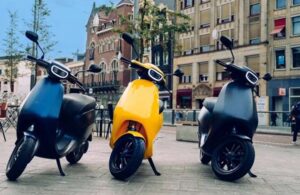Indian Institute of Technology Jodhpur (IIT Jodhpur) researchers have recently developed a method of increasing driving comfort by reducing oscillations in electric two-wheelers due to an uneven driving surface.
 The proposed method is an Integral Sliding Mode Control Based on Direct Torque Control for Induction Motors.
The proposed method is an Integral Sliding Mode Control Based on Direct Torque Control for Induction Motors.
This approach is designed to take advantage of the inherent characteristics of disturbance rejection, robustness and operational uncertainty and parameter variations.
It also seeks to enhance the performance of the conventional Proportional-Integral-based DTC approach in uncertain EV driving conditions.
Deepak Fulwani said that the proposed work could improve driving comfort for EVs, which are affected by different road conditions.
The non-linear ISM circuit effectively counteracts variations in speed by ensuring that electromagnetic torque and dynamic torque demand are equalized. The proposed method of control also eliminates uncertainties.
This work will allow for the fine-tuning of various electric vehicles in order to enhance the driving experience. The controller can also be modified to mitigate the effects of uneven road surfaces. Retrofitting of the controller is possible with existing controllers.
Transport is a major contributor to carbon emissions. Internal combustion engines (ICEs) are responsible for around 26% of total air pollution.
In order to reduce harmful emissions, there have been sustained efforts to replace conventional vehicles with electric cars (EVs).
This has led to research on the development of EVs and their control of them, as well as the creation of durable motor designs, efficient batteries and cost-effective production methods for vehicles to improve performance.
